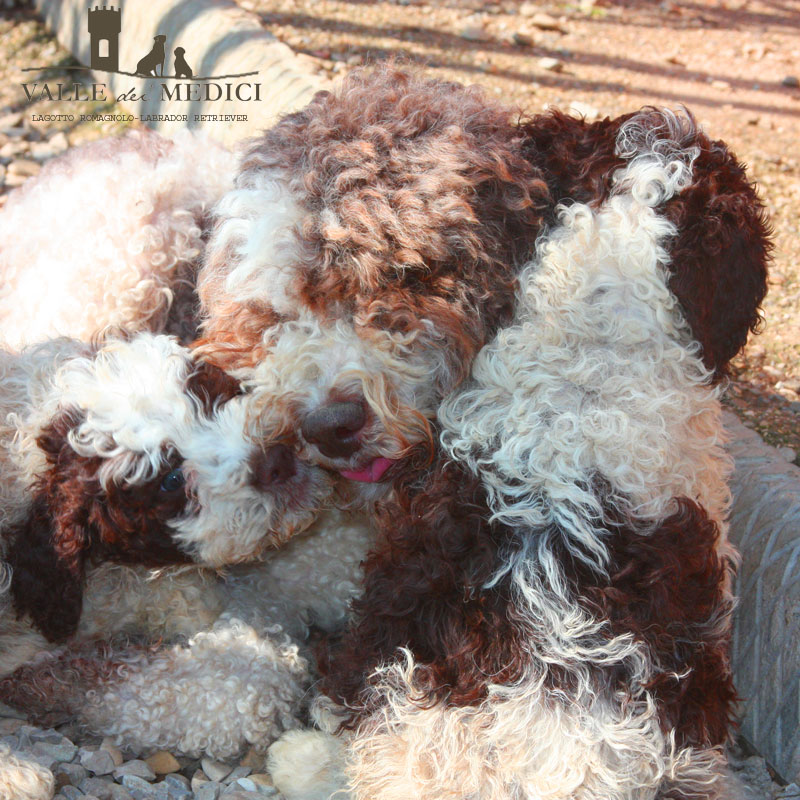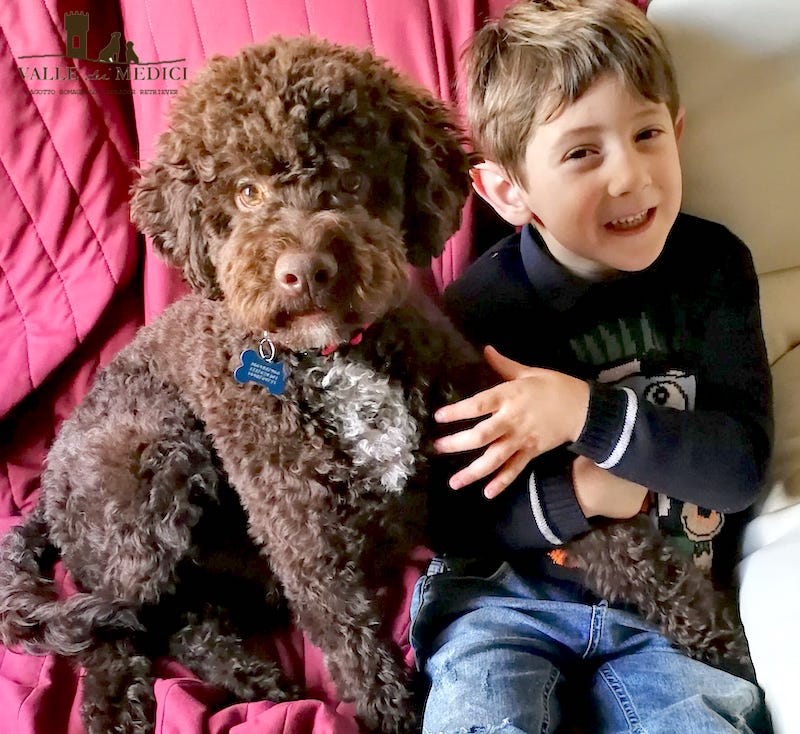The Character of the Lagotto Puppies.
Understanding the character of the puppy is important to determine their ability to adapt to the situation proposed to it by the adoptive family.
There are many families with children, elderly people, or owners of cats or other animals. Now interested in one of our Lagotto.
The space and time that will be available to the puppy are also elements that help to identify the right puppy for each circumstance.
The character of the puppy is formed indicatively in the first 4 months of life. In relation to the experiences the dog will have, it can also change over the course of his life. A sociable puppy can change his character even as an adult and become aggressive or shy. It depends on circumstances and negative experiences.
What we aim to do is to assess puppy character trends to achieve the best association between puppy and family.
By living our litter daily we try to never leave any puppy behind.
A well looked after litter will have a homogeneous character development. There will be no imbalance with some puppies too dominant and others too submissive.
Approximately between the sixth and eighth week of life, it is possible to get an idea of the character of the Lagotto as an adult. We are talking about a trend that we can verify almost at the end of the training course at the farm.
The Campbell Test
W. E. Campbell is an American psychologist who in 1975 defined a behavioural test for the selection of the puppy. A scholar of animal behaviour, and an observer of the relationship between man and dog, he defined an empirical method for evaluating the puppy’s temperament.
Campbell’s test does not provide scientific truths about the character of puppies and can also be used with adult dogs.
For a puppy we will talk about behavioural trends, which are useful information for the breeder. Even today, for its effectiveness and reliability the test is still in use and considered a valid tool.
The test is based on 5 simple exercises. For each exercise we give 5 possible evaluations of the puppy’s reaction.
Social attraction: We move away from the puppy by a few metres. By standing on our knees we attract the puppy’s attention with a few claps of our hands. We are evaluating the trust in us and in people. The dog’s sociality.
Ability to follow: by being seen by the puppy, we move away with a normal step. We are evaluating the propensity to follow us or vice versa to independence.
Constriction test: We keep the puppy turned on his back and hold him in this position for 30 seconds. We are evaluating the acceptance of physical dominance and the leader of the pack.
Social dominance: We pet the puppy from head to tail for 30 seconds. We are also evaluating the acceptance of hierarchies in relation to other dogs.
Dominance Test for Lifting: We lift the puppy off the ground for thirty seconds. We place our hands intertwined under the puppy’s belly and lift him about 20 centimetres. We are testing how the puppy accepts our dominance.
By putting together the results obtained on the various exercises, the test provides general judgements useful to understand the puppy’s adaptability to different situations.
- We will have dogs that react aggressively and where the presence of children or elderly people is not recommended. In quiet situations, if politely and patiently educated, they will be excellent guard dogs. A Lagotto will never belong to this category.
- Dogs tend to be dominant, loyal and competitive. Easily trainable and carried as working dogs.
- Dogs that adapt to the proposed situations. Suitable for children and elderly people.
- Submissive puppies in great need of pampering. They need injections of trust and affection and stay close to people. They are suitable for children but can bite if treated badly or in defence.



